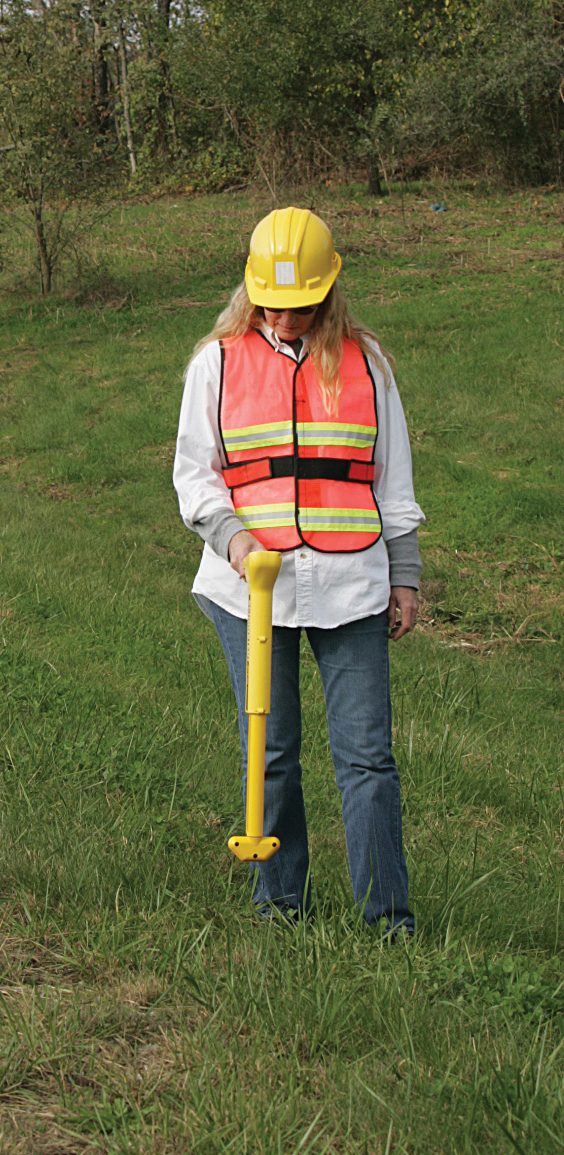Lives and Big Money at Stake: Utility Locating in the 21st Century

The Common Ground Alliance (CGA) has been collecting and publishing damage incident statistics since 2004 and concludes that the number of damage incidents — where an underground asset suffers actual physical damage — is declining by approximately 8 percent annually. The various state one call systems are largely responsible for this. According to the CGA, “One key statistic remains constant: The analysis of incoming ticket and damage data suggests that when a call is made to the one call center (811) prior to excavation, 99 percent of the time there will be no damage. And, during the past seven years, we have consistently seen a downward trend in the total number of damages where ‘failure to call the 811/one call center’ was identified as the root cause, with a continued 6 percent drop again for 2011.”
But there are still challenges, and utility location is getting harder, not easier. Over the last few decades, four factors have greatly increased the difficulty and importance of utility locating:
Increasingly dense urban environments. As cities have become more densely occupied and developed, utility location subcontractors are more often asked to find utility lines beneath pavement and buildings or in traffic. And dense development raises the stakes for locators, as well; if a power line, fiber line or gas line is breached accidentally in a neighborhood or downtown area, the results can disrupt life for thousands. Events like the September 2010 PG&E San Bruno gas line explosion, which killed four people and destroyed 38 homes, are a reminder that the stakes are high. The costs of interrupted service, damaged property and lost time raise the annual losses due to damaged underground lines into the tens of billions… and some lives.
Increasingly dense utility overlap and co-location. Related to the above factor, as the amount and type of underground assets have proliferated — just in the last 20 years, about 85 million miles of fiber-optic cable were installed in the United States — the complexity of utility location has increased dramatically. Utility location contractors called to a typical urban jobsite may now be locating dozens of overlapping utilities, some of which are highly sensitive.

Failing infrastructure. We’ve all read the ASCE Infrastructure Report Card — U.S. infrastructure of all kinds is failing and underground assets are no exception. As more trenching and horizontal drilling is done to rehabilitate infrastructure, utility locators get busier and busier.
In response to the above pressures, the federal Pipeline Inspection, Protection, Enforcement and Safety Act of 2006 (PIPES Act) authorizes the U.S. Department of Transportation’s Pipeline and Hazardous Materials Safety Administration (PHMSA) to sue excavators for violations if state regulations are deemed inadequate… and so, there is a growing body of detailed state law that applies to utility marking and locating.
Not New, But Better
Surprisingly, given the intense innovation in other infrastructure niches, new technology is not making a big splash in utility location. “About 85 percent of utility location is still accomplished by electromagnetic locators, supplemented by magnetic locators,” says James Bach, director of sales at Schonstedt Instrument Co. “Most of the remaining location is done by ground penetrating radar (GPR).”
But though the basic technology has been around for decades, handheld electromagnetic locators have been significantly refined over the last few years. Schonstedt, for example, has introduced several new refinements to locating technology, including remote radio links that improve transmitter battery life and save field time, large LCD screens that improve usability, compact units that are holsterable and extendable, improved magnetic locators that complement inductive and conductive location and sonde equipment that can be inserted into lines.
Still an Art
Underground assets are under constant attack, from forces like homeowners digging a pool, contractors putting in a foundation or simply the wear and tear caused by being underground for years or decades. Accidental damage is disturbingly common. The CGA says that “facility events” (the CGA term for near misses and damage that leads to downtime) are demonstrably linked to the amount of annual construction increase — the more work being done, the more events occur. The CGA’s annual report, Damage Information Reporting Tool (DIRT), estimates that in the United States in 2009 that there were approximately 170,000 incidents that led to actual damage.
Along with better equipment, utility location subcontractors and municipal locators are also doing a good job assembling and passing on detailed knowledge about utility locating techniques and best practices. The CGA is doing good work in this regard, and the International Locate Rodeo and Expo is a well-attended annual event — competitive utility locating may not be on ESPN anytime soon, but it definitely has an enthusiastic following.
But despite the advances, utility location is still an art that requires technical expertise and considerable experience. But it’s not a casual or imprecise art; though there are still some practitioners who use divining rods (!), the majority of locators are using modern locators based on refined technology and vastly improved user interfaces such as the large LCD screens used by Schonstedt Instrument Co. And even though the task of location is getting tougher, for reasons described above, the CGA reports that, over the last decade, damage incidents seem to be decreasing about 15 percent every year. Clearly, better laws and better technology are making a positive difference.
Angus W. Stocking, L.S. is a licensed land surveyor who has been writing on infrastructure topics since 2001.
